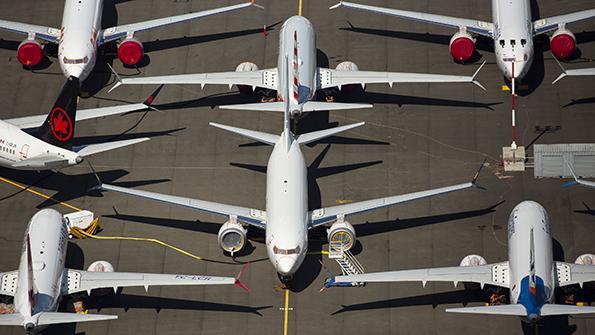
Many of us in the aerospace community are trying to estimate how great the overall damage of the COVID-19 crisis will be and how long it will take for the industry to return to some level of normalcy. But this exercise is somewhat futile because in extreme, “out-of-boundary” situations like this, standard forecasting models do not work. It is like doing division: When the denominator gets (close) to zero, the result (infinity) becomes meaningless.
And so we are left with two yardsticks: our own gut feeling and our ability to look at the situation from enough distance to enable us to see some underlying patterns or long-term trends that might emerge from the apparent chaos.
Looking at commercial aerospace in this way, several things become clearer. First, the sector’s growth trajectory before the crisis was unsustainable, with a lot of self-deception and structural weaknesses embedded in the system. When the industry starts moving from survival to recovery mode, it will need to address those weaknesses and “reset” expectations about the future. That could be the “great corrector” effect, applied to aerospace.
The biggest correction should be on the demand side. While most analyses point to a recovery time frame of 18 months to three years (back to 2019 levels and then back to the historical growth rate), they ignore several variables that could have a much deeper effect on the future air traffic growth trajectory:
- Increased environmental pressure: Will governments impose sustainability covenants on airlines as a condition for their aid?
- Consumer behavior: Will consumers travel as much, as far and with the same level of tolerance for “poor” service as before?
- Airline business models: Will low-cost airlines continue to push the sector toward commoditization, or will there be a revival of a highly differentiated market?
Such variables could reverse the shape of the air traffic growth curve from convex to concave as the long-term growth rate slows down significantly.
In one such scenario, by 2035, revenue passenger kilometers could be one-third lower than the 15 trillion expected before the crisis. This would imply a long-term annual growth rate between 1995-2035 of around 3.8%, which, all things considered, would not be so bad (and would improve the industry’s odds of achieving its sustainabilty goals). But it would still be much lower than the 4.9% forecast before the coronavirus outbreak (see graph).
The second big correction should happen on the supply side. The aerospace supply chain is incredibly complex and inefficient, with parts and subassemblies going back and forth between thousands of players scattered all over the world—partly because of history (in Europe, Airbus was first a political construction and then became an industrial puzzle) and partly because of the bad habit of tying up aircraft sales with industrial offsets. With a market possibly shrinking by as much as 40% in the medium term, the time has come for all OEMs to reset their supply chain strategy and footprint.
What is needed is simpler, more compact and more modular supply chains with a much deeper cooperation between customers and suppliers. Governments, back in the driver’s seat as they deploy their stimulus tools, will play a key role in setting the rules of the game, hopefully with a proper industrial strategy in mind.
This crisis likely will also be a “great accelerator,” as it crystallizes forces already at play before it started. The marginalization of aerospace products in the digital economy is one of those forces, as is the rise of Asia—and of China in particular—with its corollary, the decline of the West. In aerospace terms, it probably means the beginning of the end for the Airbus-Boeing duopoly, shortcomings of which have been laid bare: Blinded by their head-to-head rivalry, obsessed with market share and their orderbooks, they just took too many long-term risks for short-term wins.
Meanwhile, after playing Airbus and Boeing against each other and benefitting from the “laissez-faire” of Western nations, their Chinese competitor now has all the liquidity, domestic market scale, political efficiency and industrial capacity necessary to accelerate its quest to become an aerospace powerhouse. The West, on the other hand, will come out of the crisis financially bled dry, industrially bruised and politically in shambles. And that is how 2020 will mark the true beginning of the “Asian Century” that has long been in gestation. Hence, let us not expect a return to normal any time soon.






Comments